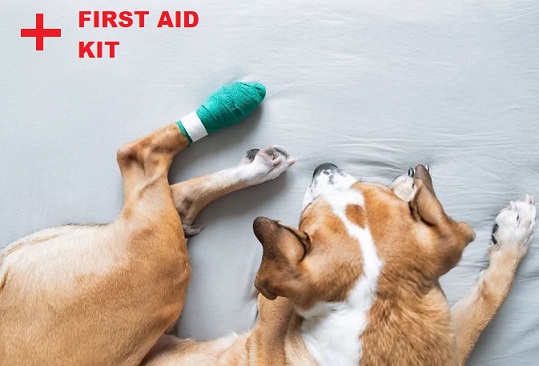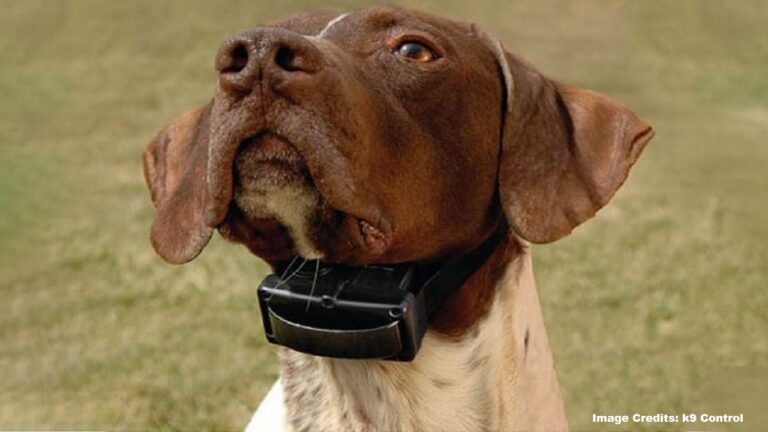What Items Should You Have in Your Dog First Aid Kit?

When you’re searching for items to include in a dog first aid kit, chances are, you’ve likely had a scare or two and are looking to be prepared. You’re a responsible and caring dog owner who knows that accidents can happen anytime, anywhere.
Let’s face it – dogs have a talent for getting into trouble. I’ve learned from experience (and a few panicked trips to the vet) that having the right supplies can make all the difference. In this guide, we’ll walk through the essential items that should be in every dog owner’s first aid kit.
Essential Items for Your Dog First Aid Kit

The ideal dog first aid kit should contain essential items like bandages, gauze, antiseptic wipes, and a needleless syringe. Let’s get into the nitty-gritty details of what should be in your dog’s first aid kit. This checklist is designed to cover everything from minor scrapes to more serious emergencies.
1. General Bandage Supplies
When your dog gets a cut or scrape, the bandage is often a temporary fix until you can see a vet, but it plays a vital role in providing support and preventing contamination. Make sure the bandages are snug enough to stay on, but not so tight they cut off circulation.
Must-have bandage supplies include:
- Self-Adhering Bandage Wrap (also called a crepe bandage): Perfect for creating a secure wrap that stays in place without sticking to fur.
- Gauze Pads and Rolls: Essential for covering wounds and absorbing any discharge.
- Tape: To hold everything in place. Make sure it’s pet-friendly and easy to remove.
- Blunt-Tipped Scissors: These are safer to use around squirming pets and great for cutting bandages or even trimming fur.
- Tweezers: For removing ticks, splinters, or any small debris.
- Gloves (Rubber or Latex): For maintaining hygiene while handling wounds or administering first aid.
2. Wound Care Supplies
Dogs are naturally curious, which often leads to cuts, scrapes, and wounds. An antimicrobial wipe or spray will clean the wound before bandaging. Always consult with your veterinarian before applying any treatment to your dog’s wounds at home, as some products can cause more harm than good. An antimicrobial ointment can also be a good addition to your kit for deeper wounds or abrasions.
However, it’s always best to consult your veterinarian before applying any products to your dog’s wounds.
3. Eye Wash and Lubrication
Ever noticed your dog rubbing their eyes frantically after a trip outdoors? That’s a sign something may have gotten in there. Keeping an eye wash solution in your kit allows you to gently flush out any foreign particles.
Lubrication drops can also help soothe irritated eyes, but remember, eye injuries can be serious. Always consult your veterinarian before attempting treatment.
4. Needleless Syringe

A needleless syringe is more versatile than you might think. It’s perfect for giving oral fluids to a dehydrated dog, flushing out wounds, or administering liquid medication. Keep a few in your kit – they’re a lifesaver.
5. Probiotics
Let’s talk about upset stomachs. One of the most common health issues for dogs is digestive upset – vomiting, diarrhea, or a lack of appetite. If your dog shows these symptoms, consult your vet immediately. Sometimes, they might recommend probiotics to help stabilize your dog’s gut health.
6. Clean-Up Supplies
Emergencies are messy – trust me, I know! Stock your dog first aid kit with pet towels and cleaning wipes to quickly handle any urine, stool, blood, or other bodily fluids that might be part of the situation. This not only helps your dog feel more comfortable but also keeps the environment safe and clean.
7. Additional Essentials:
Don’t forget to regularly check your first aid kit to ensure all supplies are up-to-date and ready to use. Here are a few more essentials that might come in handy:
- Emergency Blanket: Keeps your dog warm if they’re in shock or need transport.
- Muzzle: Even the calmest dog may bite when they’re in pain.
- Digital Thermometer: To check for fever or hypothermia.
- Pain Relief Medications (Pet-Specific): Only use vet-approved options.
- Pet First Aid Manual: Quick reference guide for emergencies.
- Emergency Contact Information: Always have your vet’s number, a nearby emergency clinic, and a pet poison control hotline.
Read Also: How to Build a Dog Treadmill
Final Thoughts
Having a well-prepared dog first aid kit isn’t just about being ready for emergencies; it’s about showing your dog the love and care they deserve. Remember, your kit is the first line of defense, but it doesn’t replace the expertise of your veterinarian. Stay prepared, and you’ll always be ready for those unexpected moments.
Read related posts about





